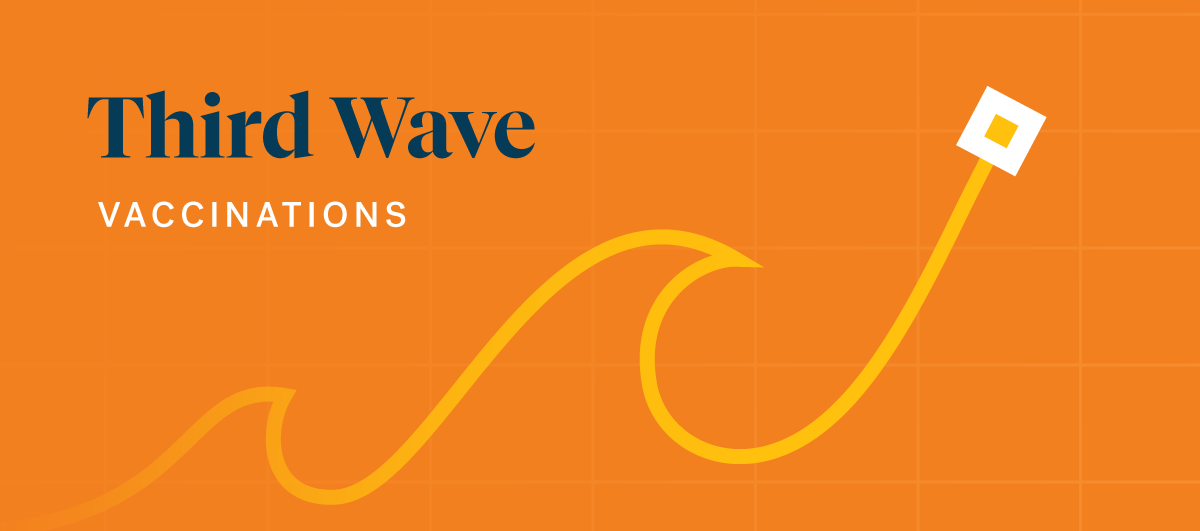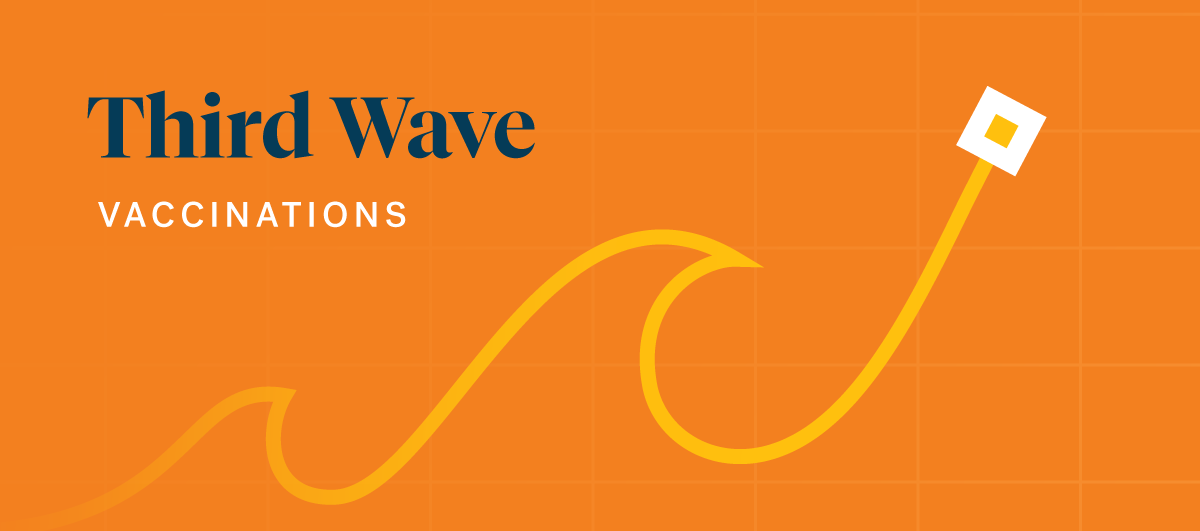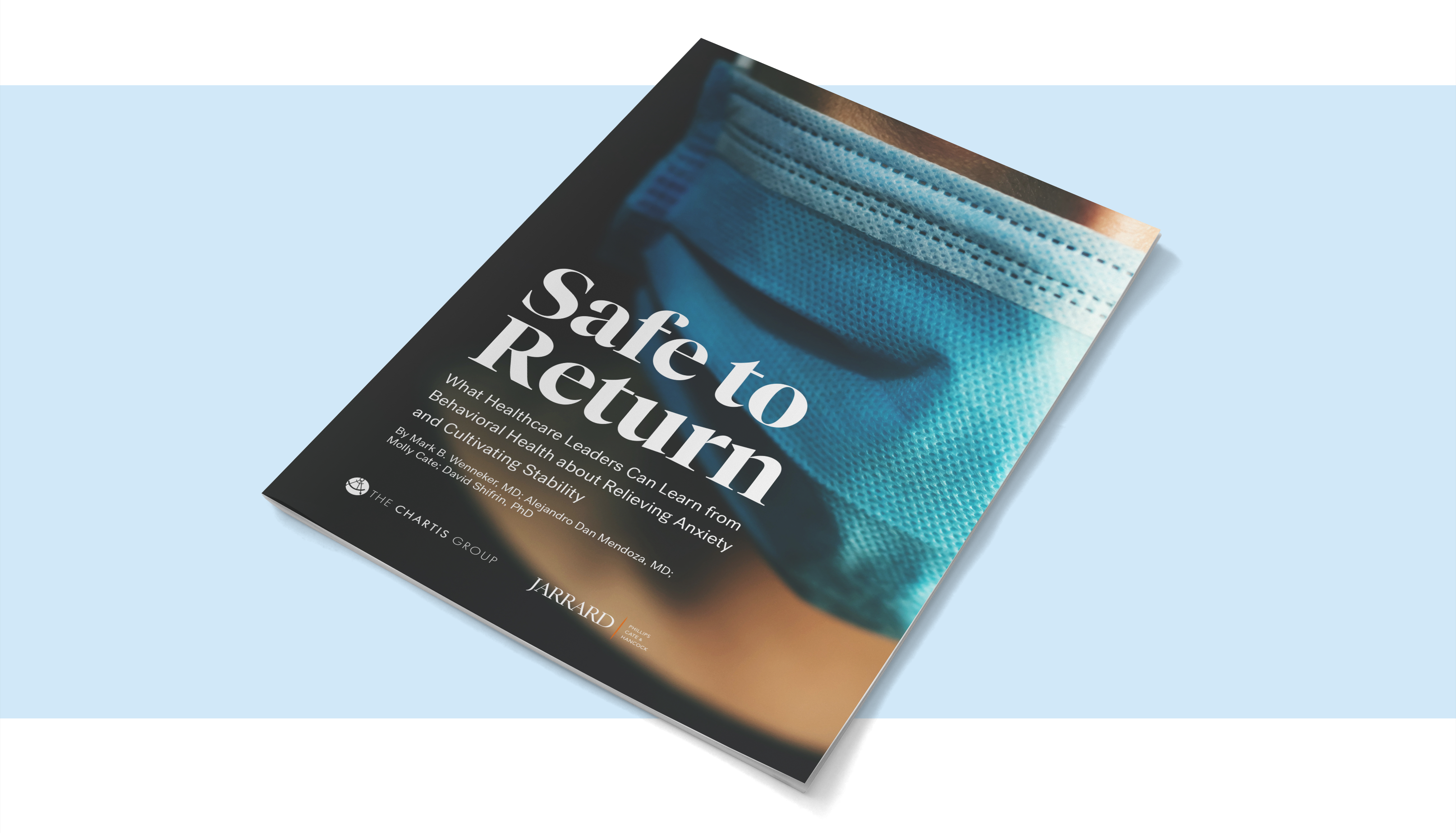
The expectations for healthcare executives have changed.
Hospital and health system CEOs are expected to take a stand on issues and to be public figures. Here, David Jarrard, CEO of Jarrard Inc. and Michael Peregrine, Partner at McDermott Will & Emery, discuss the changing environment for healthcare CEOs, the pressure on leaders to take a stand and how they can do that in a transparent way without stepping across legal lines. Between social change and the COVID-19 pandemic, the relationship between healthcare executives, their boards and their legal and communications teams is more important than ever.
Listen to the podcast, watch the conversation or read the transcript below.
Read the Transcript
David Shifrin: Well, welcome to High Stakes from Jarrard Phillips Cate & Hancock. I’m David Shifrin. And today I am joined by our CEO, David Jarrard and Michael Peregrine, who’s a partner at, our good friends at McDermott Will and Emery. He’s an attorney who specializes in corporate governance and corporate structure.
And the genesis of this conversation came about because we’ve been looking at a number of different things. Michael has been thinking about the relationship between the chief executive officer as well as chief counsel, and the reason why that relationship is so important.
And what we’re seeing is that the CEO of organizations in general really need to be more visible now than ever. People are, as we know from numerous surveys, looking to leaders and executives for trusted advice and direction. And that’s very true right now in healthcare. In addition, people are beginning to expect more of CEOs. The idea of what a lot of people call a social impact company, like say Patagonia or a Tom’s Shoes, it’s shifting from sort of an outlier to the mainstream.
So healthcare leaders in particular hold a unique position today because so much of society revolves around the pandemic and healthcare. And of course, healthcare should be by definition a social impact industry. We’re mission driven to care for people. So the question becomes in this current environment with COVID-19 and, you know, we’re preparing for a vaccine rollout that is happening as we speak, is how a healthcare executive sort of walks the line of taking a stand, both in terms of healthcare issues as well as larger social concerns and provide necessary information while not falling into foolish talk or legal liability. So again, I’m grateful to have you, Michael, and you David, join us for this conversation and really looking forward to what we can come up with.
Michael Peregrine: Well, David, you made it a lot of great points in your introduction.
I do think there is an expectation of CEOs to take more of a public position. And, you know, as David knows, in the old days CEOs kind of shied from the public venue, they shy away from major high profiles, and their board wanted them to shy away from a high profile situation. You know, it’s a great way to get in trouble.
As some, as the board members would say. All sorts of legal risks, disclosure problems, antitrust concerns. But David that’s changing. I started to notice this. I’m curious about your perspective, all of a sudden, you know, earlier this year we saw some of the corporate social responsibility conversations on gun control and immigration and some of those issues, but it seems like things began to change when CEOs started speaking out in November about the presidential election transition. And that started to morph into the period of the vaccine. And I was curious, are you seeing it the same way I am that this…all of a sudden the landscape is changing for CEOs and public commentary?
David Jarrard: Yeah, Michael, we, we are . I think CEOs are finding an opportunity to fill a vacuum of trust that exists in the community.
They recognize that because of who they are, and the organization they represent, they have some credibility, they have some strengths they can bring to the conversation, and many are taking advantage of that some wisely and some not so much.
Michael Peregrine: We’ve seen that a lot. And I guess one of the things that I always wanted to remind clients is historically, you know, who do they go to in terms of advice on what to say and when to say it and things of that nature? David, my view has always been, you better check with the board chair before you venture out there, but perhaps first, you know, CEOs look to a team of colleagues on their executive leadership team, the chief communications officer and the chief legal officer and touch base with them first.
And those are two folks who don’t usually communicate a lot. They don’t talk a lot or collaborate a lot on projects, but on this one, it seems like they ought to.
David Jarrard: Ought to, and more and more generally we would hope that a CEO or a leadership team would check with the communications officer because there is a communication strategy.
And you want the voice of your CEO or the leadership team to echo and support the strategies put in place, which is usually about building market share or providing a level of trust with customers and patients in your organization. What we’re seeing now are CEOs who are sometimes acknowledging the communication strategy, but sometimes going well outside of the bounds of the traditional strategy that they would be following.
Michael Peregrine: Well, that’s why I suggest they talk to the chief legal officer first, who also is the board’s chief legal advisor. And yeah, just kind of clear the way here and make sure that the CEO is now stepping into forbidden territory. But I think David, part of that is maybe sharing with the board and educating the board on, now might be the time for the CEO, especially in healthcare, to start speaking out on some of these issues. You know, it’s not just the vaccination, although that’s certainly the key thing, right?
You know, we forget about things like the social determinants of health the racial disparities in delivery of healthcare. There are a lot of issues on which they ought to be speaking about.
David Jarrard: There’sa lot of issues that they ought to be speaking out on, and they have a unique opportunity to speak out.
You know, David mentioned early on a number of surveys that reflect the level of authority or credibility that certain voices have in the community. We’ve conducted some of these surveys ourselves. And one thing we certainly find, particularly on healthcare issues, is that hospitals and local hospital leaders, physicians, and nurses have enormous credibility, enormous power to influence how people think, and that the community is looking for these people to speak out on these issues.
So it’s an opportunity, but it’s also a responsibility we would argue for these mission-driven organizations to speak out on the things that they have credibility on.
David Shifrin: David and Michael, I wanted to expand on that a little bit, because, so here the firm, we talk about an idea of responsible transparency and Michael, in your article that you wrote for Corporate Counsel that just came out on the relationship between a CEO and CLO, you use this phrase “right and legal,” which I think is kind of a similar idea to responsible transparency. But you both are talking about sharing the right information. What does that mean, both in terms of the communications and being proactive and offering information, and then also legally, you know, right versus legal. And how do you, how do you balance that?
Michael Peregrine: Giving credit where credit was due. The concept of, the questions of, is it right? And is it legal? Are the basic questions that the chief legal officer is expected to ask. The modern chief… chief legal officer. That’s a concept that can be attributed to Ben Heineman, the esteemed former general counsel of General Electric for many years. And his point was you’re more than a technical legal expert. You’re a business partner to management and you’re a voice of responsibility and conscience to the organization. And I think, David, that’s where some of these issues come up.
You know, the thing that jumped out at me as today as we’re taping this is, you know, this confluence of the vaccination. I was talking to clients today where the vaccine had arrived at their institutions today. We have that, we have Dr. Fauci, his comments about the need to have up to 75% of the population expanded.
And then you and I both were reading the same stories in The Times today about certain voices out there saying this is a communist conspiracy. Right. Don’t do it. Yeah. It’s, so, the question of, is it right? Is it consistent with the mission? That’s a conversation, David, I think that the CEO ought to be having with the board chair and the general counsel.
I think that falls in the category of, is it right? And then how do we make it legal?
David Jarrard: Michael, I agree. And I love your emphasis on the CEO engaging with the board. Because many of the boards we work with, the health systems of course are representative of their community and reflect a public mission of, often, a public health mission to advance public wellness in their organization.
And they do that through the operation of their health systems, but they also can do it by being strong advocates in this case for the vaccine and for other things that would cause population health to be improved in their community. But it’s right that the board ought to be aware and an endorser of the CEO’s actions.
I think sometimes the challenge is, is when the CEOs and other leaders go off the reservation and they lose some credibility when they speak about the things that they are not naturally connected with. Right.
Michael Peregrine: We’ve seen some examples in our industry where that has occurred and the board has acted swiftly because of the damage to the institution.
And that damage, David, I guess, could be immediate, can’t it, with the wrong kind of public communication.
David Jarrard: It can. Reputations are, are, are hard to build and they can take a lot of time, but they can be quickly dismantled.
Michael Peregrine: How do you handle that, David, when you get a call from an institutional client that says, “I have to respond to this comment on vaccination, that’s so contrary to what we need and must do. I need to get something out right away.”
How do you slow him or her down? What’s your course. How do you approach that conversation in terms of structuring the communication such that it doesn’t risk the CEO or the institution.
David Jarrard: You, you start with the core of your organization. You’ve got a mission, you’ve got a purpose and everything you say ought to be reflective of that.
Even if it is controversial with some opinions in the community it needs to reflect who you are as an organization. The board is truly helpful in helping define that. That’s thing one. Thing two is, there’s very few issues that are going to be raised that are a surprise. It’s not a surprise that vaccines are controversial. It’s not a surprise that this has been politicized issue like masking throughout pandemic. Smart communications officers and CEOs will have run scenarios, anticipated the questions that are going to come and be able to lean into them swiftly when the question comes.
Michael Peregrine: Are there limits to the venues that you would recommend a CEO use to set, send this public health message, social media versus print interviews, things of that nature?
How do you structure the communications plan?
David Jarrard: If it’s a question of the CEO speaking, you want a voice where the CEO’s message can be delivered in full. RIght? Those personal interactions. Those in-person engagements are the most powerful and the most persuasive. Social media is great, but it’s like a loose cannon ball running around on a ship, hard to control.
And you have no idea what happens to it afterwards. So they can be a supporting actor there. And I, and I think it should be because so many people get their information there, but you’ve got to start with a core message that comes through personal engagement.
Michael Peregrine: And that’s the hope where you… that the chief senior communications officers are going to reach out and say, we also have to touch base with the chief legal officer and vice-versa and David Shifrin this goes to the point you raised, and this is one of those situations where collaboration horizontally in the C-suite between these two senior officers. And they work together from time to time. But really, it seems to me, David Jarrard is acute. You they’ve got to know that both they, they both have jurisdiction over the issue, that they both have a message to say, and they continue together. One going forward on this issue without the other in tow, it seems to me a real risk.
David Jarrard: I love your phrase that both have jurisdiction. We think of it in terms of like a political campaign where you have a variety of interests who are in charge of pushing the organization forward and pushing this message forward.
And these different voices need to be working together in tandem all the time, particularly in a moment of heightened scrutiny, like this, and heightened exposure like this. It ought to be not an occasional conversation or just a board meeting conversation. They need to be talking every day, emailing each other back and forth every day about what has, what has been, what is coming and what can you expect next?
David Shifrin: Something I’d like to highlight here. You’ve both touched on, but I think it’s really worth calling out is there may be issues that are legal. But, and again, this goes back to right and legal and responsible transparency, but there needs to be that, that communications perspective about how you should say it.
Or whether you should say it at all and the reverse is true. Right? And so having everybody in the room at the same time. I know David, we’ve got colleagues here who are strong advocates for having, you know, marketing and communications folks at the table in the room when operational and strategic, and in this case, legal decisions are made.
So they can be there to provide a perspective on how that might be… that message might be received as well as to craft the message in real time.
Michael Peregrine: Well, then those are messages, for example, the chief legal officer may be completely unaware of some of the critical concerns that David and people in his area are aware of and vice versa.
Historically again, this goes back to why CLOs have, have advised CEOs to be very wary of public communication. The potential impact that they may have in terms of sharing confidential information, the perception there’s somehow signaling anticompetitive messaging to within the organization or to colleagues or other organizations, they are somehow sending a message that’s antithetical to their charitable or tax exempt purposes.
If they’re a charitable organization or that they’re saying something that could have a dramatically negative effect on ongoing negotiations with the business partner, that’s the CLOs world. David but what does the CEO need to know from, from you as to things that he or she should be considering as he or she evaluates his advice to the chief executive.
David Jarrard: Well, I’m ticking in through my head the number of issues that just your comments have raised with me already where the CLO needs to be a partner in the conversation. I mean, right now we’re having any number of conversations with leadership teams who want to know how to talk about the vaccine and generate such a, such a conversation that causes vaccine hesitancy to be reduced where people feel confident about taking the vaccine. And sometimes the emotional reaction is just to provide an unambiguous assurance. “The vaccine is totally and utterly safe.” I hope that… I hope that would scare a CLO. We don’t want to hint in that direction.
Michael Peregrine: Yeah. Well, I think that the, the other issue is that the CLO would benefit from discussion from the chief communications officer of the real impact. What you think of a CEO coming out and speaking, as opposed to the chief of the medical staff or some other clinician or researcher, how would you describe the impact of a message from the CEO of a major metropolitan academic medical center in this issue?
David Jarrard: It’s different in every case. And clearly when we’re talking about vaccines or clinical issues, the clinical leader has much more credibility and authority from which to speak. Nurses and doctors are powerful spokespeople when it comes to the delivery of medicine.
Sometimes the CEO needs to speak because it’s a business issue or the CEO is speaking to his or her staff and colleagues in an environment, which we’re in now, nurses and physicians are looking for the leadership team with their organizations to have their back.
They get frustrated that the experience they’re having in the hospital of watching people die from COVID is not reflected when they go to Walmart or go to the grocery store and they see a community not having the same experience. And so they’re looking for leadership teams to speak for them, to have their back in those conversations.
And it’s an opportunity for CEOs to do the right things for their internal audience, as well as their external audiences.
Michael Peregrine: How does that relate to the upcoming decision that many institutions are going to have to take about whether or not to mandate vaccination. Who delivers that message? And what does that look like?
David Jarrard: It’s a great question because it needs to come both from the clinical voice and the voice of authority and the leadership of the organization. The clinical voice needs to say “here’s why medicine and science tells us this is the right thing to do.” The, the CEO has a, has a business decision to make.
And frankly, to your point earlier, both llegal exposure, labor exposure, any number of exposures that have to be considered as they take a position like that. And I would hope that the board is involved in a decision like that because of the trailing consequences about it in the organization itself.
David Shifrin: Michael, can you talk a bit about that legal exposure that could arise from those decisions as well?
Michael Peregrine: It’s a fascinating topic, David and it’s one of those things that the lawyers love to hate, which is it’s a muddy situation. It’s absolutely, going to David Jarrard’s question, a board issue.
Ultimately, that’s the kind of a decision that has such stakes. You can’t ask management to make it alone, and there are a number of factors the board’s going to have to take into consideration. Number one is obviously the, what is the right thing? What are the public health implications? Right? What is the value of to the organization and its workforce from mandating vaccination How do you prove it?
But I think the legal issue in where the CLO comes into play is the question of, okay. There’s a basic… the law basically says you have a duty to make sure of the health and safety of the work first and that the workplace is free of hazard. And that’s the way the organizations have previously put out mandates on other elements of flu.
This, it gets complicated though. And David, this goes to your area. If you have large sections of your workforce that are a part of an ethnic or religious group that has, that has real fundamental problems with the concept of vaccine or distrust with the vaccine, how does that work out?
Again… and then the following question or issue is, how does that play with your community? Is a mandate seen as authoritarian. And then what are your legal exposure in terms of the corporation as a board, will you be sued for issues arising out of the vaccination? None of those are – other than perhaps the legal issue – the issue of whether or not you have the right to do it is a up or down concern, David or a lot of those other issues go to the kinds of things you were talking about.
What do you, what is your knowledge base about the, your workforce? What are the community views on this issue? What would be the impact on the consumer? If you say, “we have made a decision at ABC medical center to require our employees to be vaccinated.”
David Jarrard: It is as you know, Michael, it’s not an insignificant issue.
And the latest surveys tell us that 36%, I think of nurses say they are very hesitant about taking the vaccine and in fact do not plan to take it. And so would you as an organization require 36% of your nurses to take the vaccine or leave? It’s a challenge for hospitals and health systems because they can’t afford to lose the nurses. We need every single one that we have. So it becomes a stalemate on with both a labor issue and a philosophical issue for an organization. Not a small topic. The hope is that as more people take the vaccine, they’ll see its efficacy. And they’ll say that it is being able to be received without side effects. And over time it’ll become accepted, which we’re not there yet.
Michael Peregrine: To both of you. That, from my perspective, advising client boards say, be prepared to make this issue. Be prepared to move swiftly, start to have these conversations in the evening, don’t let it wait till after the holidays. Recognize the public health concerns, recognize these frightening statistics about the resistance to the vaccine and start to prepare your CEO for the kind of communication plan that you need to, because this all goes to the kind of back to where we began, David.
And that is, we’re in an environment now where I would say business leaders generally, and certainly in healthcare, are going to be expected to be engaged more in, uh, have with the public profile. David Jarrard, you’re lead… your concept of leadership, it is part and parcel of a values based company portfolio. I would say, consistent with these concepts of social responsibility.
Would we be having this conversation three years ago? Probably not. But, it neatly fits within where corporate purpose conversations are going. My message, again, fellows, is boards need to be preparing tonight to start that conversation. So they’re positioning their CEO to work with their communications consultants to clarify the, their legal rights, and to get those messages out before the window of vaccination opportunities past.
David Jarrard: Michael, I think that’s so smart. And, I think it’s smart, the boards being prepared, and I think it’s smart that boards need to be prepared tonight. Because we’ve been talking about the CEO and the leadership team as being the spokespeople. But as the boards, particularly of our not-for-profit hospitals, go out into the community, they’re the spokespeople.
And they have incredible power as they speak in their, within their church circles, within their grocery circles, with their social circles, what they say matters. And if it’s, if they’re saying something that’s consistent with their organization, they can advance it, but it’s easy for that to be disrupted and miscommunicated.
So then they need to be as consistent as the CEO in what they say and what they talk about.
Michael Peregrine: And David, are you concerned as I am that if they don’t make a decision and act on this relatively soon, the voices of those who were on the… on the fringe, the voices that we are reading about now that are saying this, this is a conspiracy, this is an awful thing and urging the public to reject the vaccination, that those voices will become accepted more broadly by the population.
David Jarrard: We cannot create a vacuum that allows those voices to be the only voice that is heard. Our belief is that hospitals and health systems are the original purpose-built organization. And we have a responsibility as boards and leadership teams to exude that purpose in our communications and messaging, particularly right now.
You’re, you’re exactly right, Michael. We’re at a key moment, a turning point moment. The pandemic has been raging for 10 months. We now have a solution, a reason for hope. We have to endorse that hope. We may not be able to fully explain everything, that is how it’s going to work and how it’s going to roll out over the next six months.
But if we can lend our own emotional voice of support, we will have a quicker and a better outcome.
David Shifrin: Well, thanks so much to both of you. So, move quickly but thoughtfully, have those conversations tonight. The board needs to be involved. Any other, you know, very specific action items that healthcare leaders should take home right now. And, and …either that you’ve covered that you want to highlight again, or that we haven’t covered.
Michael Peregrine: You know, David, I would say that it doesn’t have to be the CEO there. I’m sure there are CEOs who prefer not to have a public profile who are by nature people who like to operate outside of the public glare and David Jarrard, in that instance who’s the default? Is that the board chairs and the chief of staff? We, we don’t want to put this all on the CEO, even though that’s the logical person.
David Jarrard: It should not all be the CEO. The clinical voices here are powerful. Your chief medical officer, your chief nursing officer are valuable. Also what’s valuable is somebody who’s good at it. Somebody who’s comfortable at it, Michael, to your point, they… somebody who’s passionate about it, but can’t deliver that message. It’s not really helpful. So it’s a role of the communications officer to train those key leaders up to play that role.
And as I said earlier, board members, whether they like it or not are spokespeople, so they’ve, they’ve got to be equipped and trained.
Michael Peregrine: And David, I would go beyond this, the particular immediate issue of vaccination. I would say that there are others we want to keep in mind. There are other public health issues on which CEOs really need to be speaking out on. We forget about them with the pressure of the pandemic, but DavidJarrard, the, you know, there’s so many other things that have occurred this year that require our attention and require CEO attention.
We don’t want to miss those.
David Jarrard: You’re exactly right, Michael. And it’s, it’s not a secret what those are: the racial inequities and price transparency and surprise billing. We could go on and on with the list, but so can any other leadership team in a healthcare organization, and there’s no excuse for not writing down that list, coming up with your answers for that.
So you’re prepared when the time comes and when the questions comes. Because they’re coming.
Michael Peregrine: Especially when you see alternative views expressed on media outlets from ranging from 60 Minutes as it was last Sunday to, to social media, to the newspapers and things of that nature. It’s a different world for CEOs now, isn’t it?
David Jarrard: It is a different world. And we have to be prepared to answer those alternative views that are responsible in a way that’s responsible. We also have to be prepared to know how to deal with the crazy, cause the cazy is coming too, and it deserves something or nothing from us. We need to make those decisions instead of in the moment.
Michael Peregrine: I thought we were done with that stuff!
David and David. Thanks very much.
David Shifrin: Thank you, Michael. Thank you, David.
David Jarrard: Thank you.
Subscribe to Jarrard Insights & News
"*" indicates required fields








